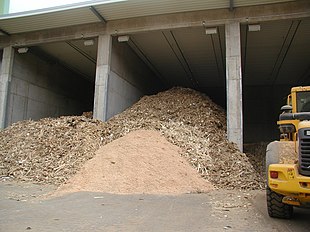Cascade use
The use of a raw material over several levels is referred to as cascade use or multiple use . In this way, a particularly sustainable and efficient use and savings in the use of raw materials should be achieved, raw materials or products made from them are used in the economic system for as long as possible. It is differentiated from the combined use , which provides for the use of by- products in addition to the use of a main raw material or product .
As a rule, a cascade of use includes a single to multiple material use with decreasing added value as well as a final energetic use or composting of the raw material. Cascading use can achieve both ecological and economic advantages, such as lower environmental impact, savings in greenhouse gases , lower costs and higher added value.
The cascade use is discussed both with an established raw material base in the petrochemical industry and with the use of renewable raw materials . Examples of cascading use are established and novel recycling chains or the use of substitute fuels to generate energy. In the field of renewable raw materials z. B. initially a material use of wood or bio-based plastics as an industrial raw material and then in energy generation possible.
See also
Web links
- Definition in the network resource efficiency
- Announcement on the funding of applied research in the field of renewable raw materials within the framework of the federal government's funding program "Renewable Raw Materials" with a focus on "Innovative multiple use of renewable raw materials, biorefineries" from April 24, 2008 (PDF; 91 kB) with a short definition of cascade use
literature
- Oliver Türk, Material use of renewable raw materials: Basics - Materials - Applications , Wiesbaden 2014, ISBN 978-3-8348-1763-1 .
